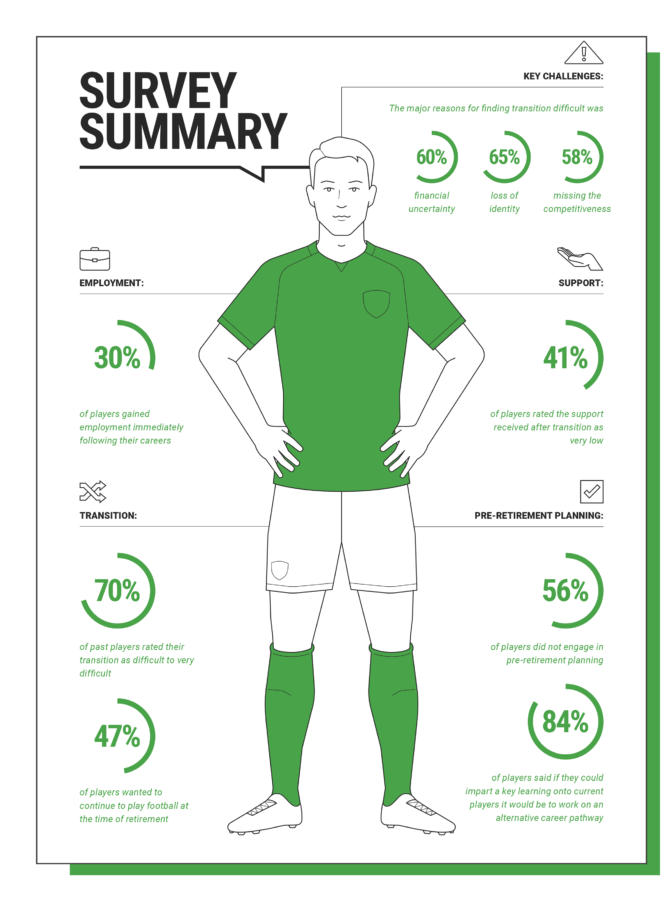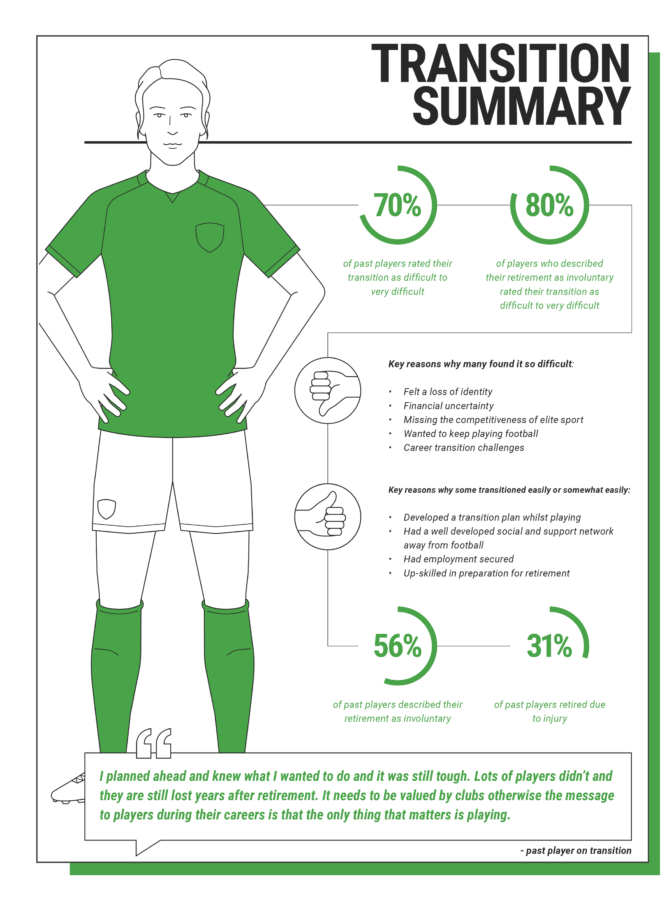Australia’s former footballers encounter significant challenges when transitioning out of the sport, research undertaken by the PFA reveals.
In order to build a clearer picture of the experience of former professional Australian players who have retired or transitioned out of the game, the PFA, in conjunction with the global footballers’ union, FIFPRO, surveyed 90 former Australian players, who had retired between 1990 and 2019.
The respondents cited challenges associated with employment, finances, support and pre-retirement planning, as well as issues associated with transition itself. The research revealed:
- 70% of players said they found transition to the next phase of their life either difficult or very difficult;
- 41% of players rated the support received after transition as very low;
- 56% of players did not engage in pre-retirement planning;
- 57% of former players said their retirement from the game was involuntary; and
- Only 30% of players gained employment immediately following their careers
The findings indicate that Australian football needs to better support transitioning players during and after their careers.
Click here to read the PFA’s Retired and Transitioned Players Report

🗳 Respondents Snapshot
The confidential respondents were former Australian footballers who had plied their trade in Australia and overseas, with over a third having represented Australia.
- 90 transitioned players completed survey;
- 91% male, 9% female;
- 46% played overseas in a foreign league;
- 37% represented the Socceroos or Matildas;
- Retirement year ranged from 1990 to 2019; and
- 37% of players played professional football for over 15 seasons

↪️ Transition
Over two thirds of respondents said they found transition to the next phase of their life after retiring from football very difficult or somewhat difficult.
The major reasons for finding transition difficult included financial uncertainty (60%), loss of identity (65%) and missing the competitiveness of professional sport (58%). Nearly half (47%) of players wanted to continue to play football at the time of retirement.
For players who said they found transition easy or somewhat easy (25%) said that was due to developing a strong social support system and network outside of football.

Only 23% reported having developed a transition plan while playing football and just 19% said they had secured employment once their career had finished.
The most prevalent reason for players departing the sport was injury (31%). This confirms that players are regularly unable to control their transition out of the game and further indicates the often precarious and short-term nature of their careers.
Those players who found the transition to retirement easy or somewhat easy had prepared for a future outside of the game, notably by developing a plan whilst playing football and developing a social and support network away from football.
This preparation was undertaken prior or during their football career, not once retirement was upon them.
💼 Employment
Following retirement, only 30% of players gained employment immediately and 22% of players required between four to 12 months to secure employment, indicating the challenges players face in finding employment after their football careers.
Only 17% said they found a job they were satisfied with immediately after retiring and 31% of players said it took them over 12 months to find employment they were satisfied with.
Support
From the players’ feedback, there is an inconsistency between support received during their career – which ranges from very high to neutral – before skewing towards very low during transition and after their careers. 41% of players rated the support received after transition as very low. In contrast, 45% of players rated the services offered during their playing career as very high or somewhat high.
💵 Finances
Of the respondents, over 70% said that they were financially secure, provided they remained in work. 13% remain concerned with their finances, while 5% said they were not financially secure and 4% said they were suffering from a significant financial hardship.
While a higher proportion of players indicated financial security, football alone did not provide securing in the long term, with the majority of players requiring full-time work after their careers.
🗓️ Pre-Retirement Planning
Despite the importance of players planning for retirement and transition, 56% of respondents did not engage in pre-retirement planning and less than a third (28%) of players said that pre-retirement planning had a positive impact on their life post football. This feedback suggests there is a disconnect between planning and the realities of transition.
Positively, 84% of players said if they could impart a key learning onto current players it would be to work on an alternative career pathway and 74% encouraged personal and professional development and the cultivation of a quality support network away from the game.
In line with the PFA’s commitment to providing policy leadership to ensure Australian football is the best governed football nation in the world, is internationally competitive on and off the field and is a central part of Australian culture, ‘The PFA Post’ analyses issues impacting Australian football.







